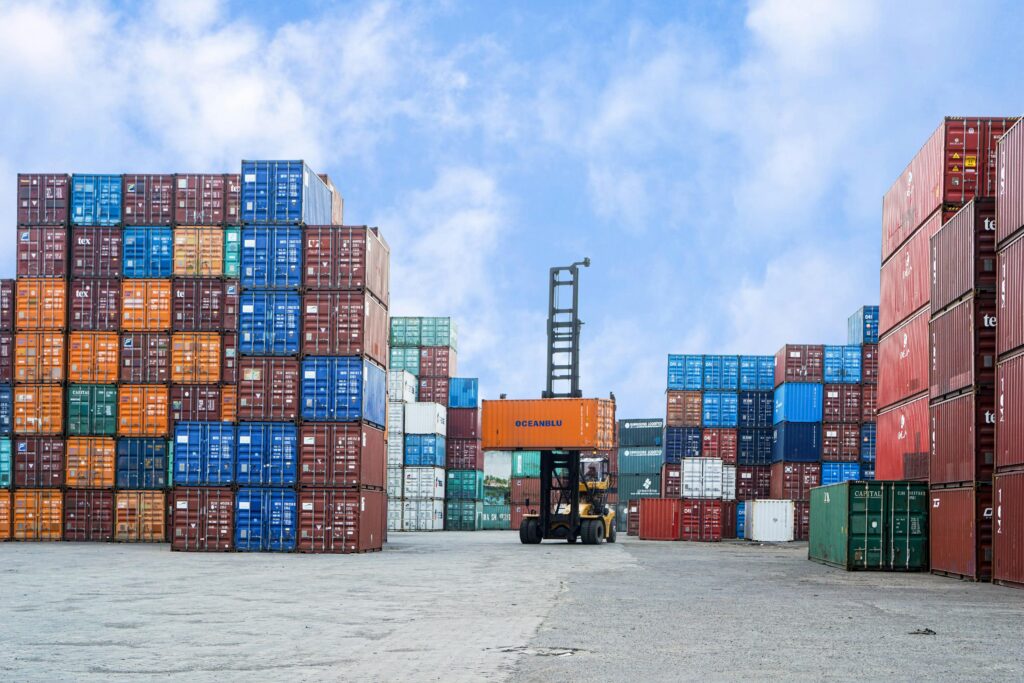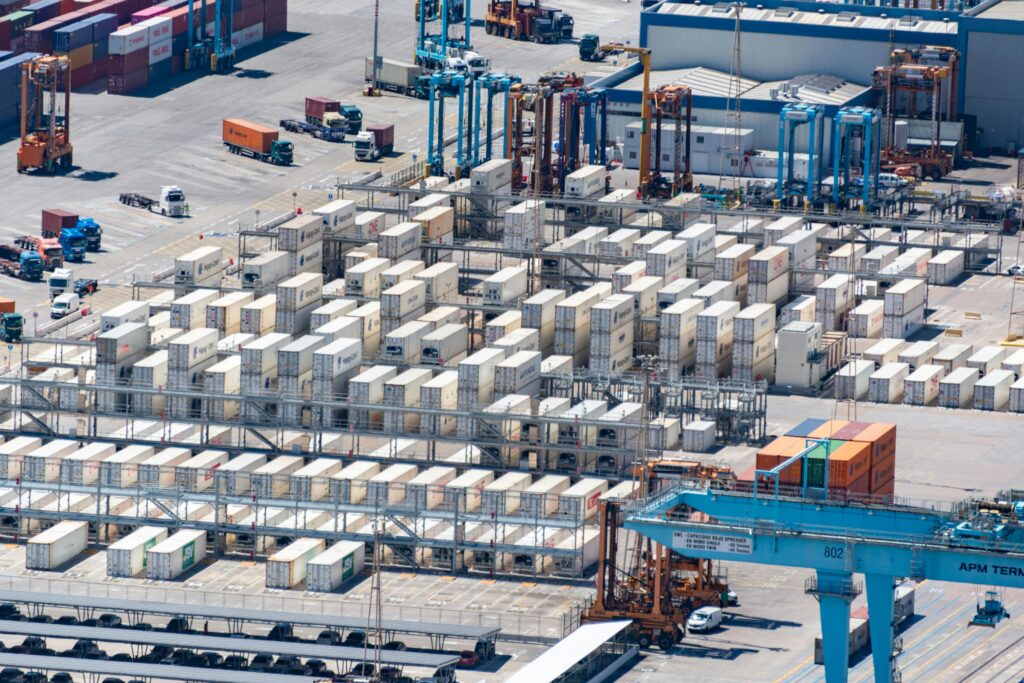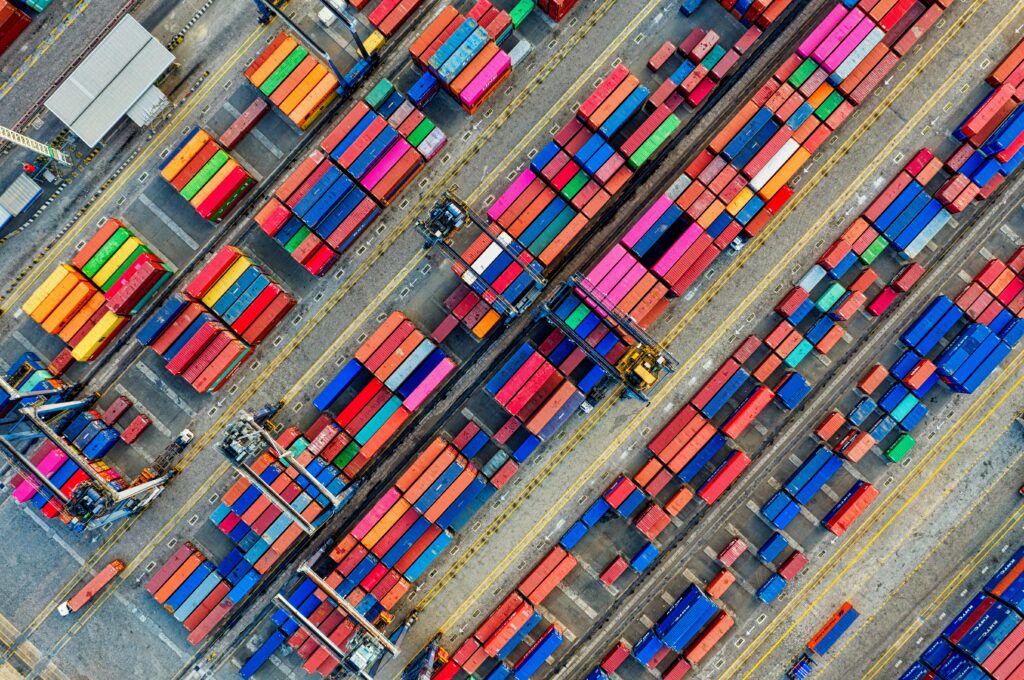
Introduction
Global trade is the lifeline of Africa’s growing economies, with importers sourcing everything from electronics in China to textiles in Turkey and machinery in Europe. According to the African Development Bank (AfDB), Africa imports goods worth over $600 billion annually, and this number continues to rise as local businesses expand their international partnerships.
Yet, for many African importers, paying suppliers abroad is one of the biggest hurdles in the trade process. Traditional cross-border payments remain slow, expensive, and inaccessible for a large segment of businesses. A World Bank report showed that sub-Saharan Africa is home to the highest remittance costs globally, averaging 8.3% per transaction, and business payments often face similar or higher charges.
In addition to high fees, local currency depreciation adds another layer of complexity. For example, the Nigerian Naira lost over 40% of its value against the US dollar in 2023, while the Kenyan Shilling dropped by 24% in the same year. For importers paying suppliers in USD, this volatility erodes profit margins and makes financial planning nearly impossible.
This is where stablecoins come in. Stablecoins, like Tether (USDT) and USD Coin (USDC), are digital currencies pegged to stable assets such as the US dollar. The total stablecoin transaction volume in 2024 reached $27.6 trillion, which surpassed the combined volumes of Visa and Mastercard, and was a significant increase from the previous year, highlighting their growing role in international trade. For African businesses, stablecoins offer a modern, practical solution for fast, affordable, and reliable payments that can bridge the gap between Africa and global suppliers.
What Are Stablecoins and Why Do They Matter?
Stablecoins are cryptocurrencies designed to maintain a stable value by being pegged to assets such as fiat currencies like the US dollar or commodities like gold. They differ from traditional cryptocurrencies like Bitcoin, which can be highly volatile. Popular stablecoins used in trade include Tether (USDT), USD Coin (USDC), and Binance USD (BUSD). By combining the benefits of blockchain technology with price stability, stablecoins enable reliable global transactions without the unpredictability of other digital currencies.
Globally, stablecoins have gained massive adoption. In 2024, the total transaction volume for stablecoins reached approximately $27.6 trillion, a sign that businesses are increasingly recognizing their role in payments.

Why Stablecoins Are a Game-Changer for African Importers
African importers contend with strict foreign exchange controls, frequent currency fluctuations, and limited access to global banking systems. Stablecoins help bypass these challenges by offering a more accessible and efficient payment option. They reduce dependence on local currencies prone to inflation and avoid hefty FX fees charged by banks. Moreover, stablecoins provide 24/7 payment capabilities without delays due to banking holidays or hours, ensuring suppliers receive funds promptly. This growing adoption of stablecoins is already evidenced in Nigeria, Kenya, and South Africa, where businesses use them extensively for cross-border trade.
For African importers, stablecoins solve several long-standing trade barriers:
- Faster Payments – Transactions clear in minutes, not days.
- Lower Fees – Transfer fees are often under 1%, much cheaper than traditional banks.
- Currency Protection – Stablecoins protect against sudden currency depreciation by holding value in USD or other stable assets.
- Supplier Confidence – Global suppliers increasingly prefer payments in USDT or USDC, as they are pegged to dollars and easy to off-ramp.
- 24/7 Access – Payments can be made anytime, even outside banking hours or public holidays.
The Current Payment Challenges for African Importers
Despite their advantages, stablecoins are not yet universally accepted by all suppliers, so onboarding suppliers is critical. Regulatory uncertainty in some African countries can pose compliance risks, requiring vigilance and expert advice. Managing digital wallets demands technical know-how and robust security practices to prevent loss or theft of funds. While stablecoins are pegged to stable assets, minor price volatility can occur, so importers should remain aware of market conditions.
Despite Africa’s growing role in global trade, importers still face significant barriers when it comes to paying overseas suppliers. These challenges not only slow down business transactions but also increase costs and reduce competitiveness.
Let’s explore some of the challenges importers face:
1. Limited Access to Global Banking Systems
Many small and medium-sized enterprises (SMEs) in Africa are excluded from international banking. According to the World Bank, only 40% of African adults have access to formal banking, compared to nearly 95% in high-income economies. For SMEs, opening and maintaining a USD account is often complicated, requiring extensive documentation, high minimum balances, and recurring fees. This leaves many traders dependent on costly middlemen or informal channels to make payments abroad.
2. High Transfer Fees and Hidden Costs
Traditional cross-border transfers often involve multiple intermediary banks, each charging fees. For example, sending a $5,000 payment via SWIFT could cost anywhere from $50 to $150 in direct fees, plus 3–5% in FX markup, depending on the bank. The World Bank’s Remittance Prices Worldwide report shows that sub-Saharan Africa remains the most expensive region to send money to. For importers making frequent payments, these costs quickly erode profit margins.
3. Currency Volatility and Depreciation
African currencies are among the most volatile globally. In 2023:
- The Nigerian Naira depreciated by over 40% against the US dollar after the government allowed the naira to float.
- The Ghanaian Cedi fell by 23% in a single year, making imports far more expensive.
- The Kenyan Shilling weakened by 24% against the USD, a 30-year record low.
For importers, these sharp fluctuations mean that the cost of goods can rise dramatically between the time of order and the time of payment. Suppliers often insist on payment in USD, EUR, or CNY, leaving African businesses exposed to unfavourable exchange rates.
4. Slow Settlement Times
Bank wires and SWIFT transfers typically take 3–7 business days to settle, especially when multiple correspondent banks are involved. In practice, delays can stretch even longer due to compliance checks, public holidays, or intermediary errors. For importers working with just-in-time supply chains, these delays can disrupt shipping schedules, increase storage costs, and damage supplier relationships.
5. Trust and Documentation Issues
Traditional payment systems often lack transparency. A payment may be “in transit” with no clear update for days, leaving both importer and supplier uncertain. In some cases, payments get stuck due to mismatched documentation or compliance red flags, forcing businesses to resend funds, a costly and time-consuming process. Suppliers, especially in Asia, are increasingly frustrated by the lack of speed and certainty in receiving payments from Africa, which sometimes results in stricter terms or upfront deposits.
With challenges like these, it’s clear why African importers are turning to stablecoins as a faster, cheaper, and more predictable solution for global supplier payments.

Risks and Considerations
While stablecoins present a powerful solution for African importers, they are not without challenges. Businesses should carefully weigh the risks before adopting them for cross-border trade.
1. Regulatory Uncertainty
The regulatory landscape for cryptocurrencies and stablecoins in Africa is still evolving.
- In Nigeria, the Central Bank initially restricted banks from processing crypto transactions in 2021 but later eased restrictions in 2023, signaling a shift toward regulation rather than outright bans.
- In Kenya, the Central Bank has repeatedly warned against crypto use but is now exploring the launch of a Central Bank Digital Currency (CBDC).
- Across Sub-Saharan Africa, only 25% of countries have clear crypto regulations, while the rest operate in legal grey zones.
For importers, this means stablecoin payments could face sudden policy changes. To reduce risk, businesses should always stay updated on local regulations and work with platforms like Yogupay, which prioritize compliance and security.
2. Security Risks and Fraud
Cryptocurrency transactions are irreversible. If funds are sent to the wrong wallet or to a fraudulent supplier, recovering them is nearly impossible. In 2023, global crypto-related scams accounted for over $1.8 billion in losses, according to Chainalysis. Importers must therefore:
- Double-check supplier wallet addresses.
- Use trusted payment platforms and avoid peer-to-peer trades with unverified parties.
- Implement internal checks (e.g., requiring two staff members to approve large transactions).
3. Stablecoin Depegging and Platform Risks
Stablecoins are designed to be pegged to assets like the US dollar, but not all are equally secure. For example, in 2022, the algorithmic stablecoin TerraUSD (UST) collapsed, wiping out over $40 billion in market value. While fiat-backed stablecoins like USDT and USDC are more reliable, importers should:
- Stick to widely adopted stablecoins with strong reserve transparency.
- Diversify stablecoin holdings instead of relying on a single token.
4. Supplier Acceptance and Market Education
Not all global suppliers are ready to accept stablecoin payments. While China leads in crypto adoption, with many suppliers already accepting USDT, other regions may still prefer traditional USD transfers. Importers should discuss payment terms in advance and ensure suppliers are comfortable with the process.
5. Compliance and Record-Keeping
Unlike traditional banks, crypto transactions don’t automatically generate formal payment receipts. This can be an issue for auditing, taxation, and customs clearance. Importers should:
- Always save transaction hashes as proof of payment.
- Issue invoices that clearly state payment was made via stablecoin.
- Work with accountants familiar with digital assets to ensure compliance with local tax laws.
6. Volatility in Off-Ramping
While stablecoins themselves are stable, the process of off-ramping (converting stablecoins back into fiat) can introduce volatility due to local market demand. For instance, during times of high demand, converting USDT to Naira or Shilling can cost 3–5% more than the official rate. Choosing a reliable partner like Yogupay ensures more competitive and transparent conversion rates.
In short, Stablecoins can significantly reduce costs and delays, but businesses must navigate regulatory, security, and compliance risks wisely to fully unlock their potential in global trade.

How Importers Can Use Stablecoins
Several platforms facilitate stablecoin payments in Africa, such as Yogupay, Yellow Card, Nilos, and Due. These solutions offer compliance, secure on/off ramps, multi-currency wallets, and user-friendly interfaces designed for businesses. Choosing a platform like Yogupay with solid local coverage and licensing ensures smooth transactions and regulatory adherence.
Step-by-Step Guide for Using Stablecoins to Pay Suppliers
- Choose a Stablecoin: Select a widely accepted stablecoin like USDT or USDC for reliability and liquidity.
- Set Up a Digital Wallet: Create a secure cryptocurrency wallet compatible with the chosen stablecoin to store and send funds.
- Purchase Stablecoins: Acquire stablecoins through reputable exchanges or digital asset platforms, ensuring regulatory compliance.
- Confirm Supplier Acceptance: Verify that your supplier accepts stablecoin payments and obtain their wallet address.
- Send Payment: Transfer the stablecoins directly from your wallet to the supplier’s wallet, typically in minutes.
6. Proof of payment: Share the transaction hash as proof of transfer.
- Verify and Document: Request confirmation of receipt and keep transaction records for accounting and compliance purposes.
Pro Tip: Always confirm wallet addresses and use trusted exchanges to avoid fraud.
The Future of Stablecoin Payments in African Trade
The adoption of stablecoins in Africa is still in its early stages, but all signs point to rapid growth in the coming years. Several global and regional trends suggest that stablecoins will become a cornerstone of how African importers pay suppliers worldwide.
1. Africa’s Growing Role in Global Crypto Adoption
According to Chainalysis’s 2023 Global Crypto Adoption Index, sub-Saharan Africa accounts for $117 billion in crypto transaction volume annually, with Nigeria, Kenya, and South Africa leading the way. Stablecoins make up a significant portion of this activity, largely because they offer a dollar-equivalent store of value in regions where local currencies are volatile.
For African importers, this means suppliers are increasingly open to accepting stablecoins as payments. In fact, surveys by Merchant Machine show that over 30% of businesses in Asia already accept crypto payments, with USDT leading the way. This aligns perfectly with African traders who source heavily from China, India, and Turkey.
2. Stablecoins as a Hedge Against Inflation
African economies face persistent inflation challenges. In 2023:
- Nigeria’s inflation hit 28%, a 20-year high.
- Ghana’s inflation peaked at 54%, one of the highest in the world.
- Ethiopia recorded inflation above 30% for several consecutive months.
As local currencies lose purchasing power, businesses increasingly turn to dollar-backed stablecoins to preserve value and pay suppliers. This trend suggests that stablecoins won’t just be a payment method; they’ll double as a financial safety net for African importers.
3. Integration with Central Bank Digital Currencies (CBDCs)
Several African countries are exploring CBDCs:
- Nigeria launched the eNaira in 2021.
- South Africa is piloting Project Khokha, a wholesale CBDC experiment.
- Kenya, Ghana, and Tanzania are actively studying digital currency frameworks.
As CBDCs roll out, they may coexist with or even integrate into stablecoin systems, creating hybrid payment solutions where importers seamlessly move between CBDCs and global stablecoins. This could legitimize stablecoin usage further and encourage more regulatory clarity.
4. Partnerships Between Fintechs and Importers
Cross-border fintech platforms are already stepping in to simplify the process. For example:
- Yogupay launched a product that allows African businesses to on-ramp local currency into stablecoins and off-ramp globally in minutes.
- Major exchanges like Binance and Coinbase are building Africa-focused payment products.
With fintech innovation driving adoption, stablecoin usage in trade is projected to accelerate. By 2030, the African Continental Free Trade Area (AfCFTA) could create a $3.4 trillion single market, and digital payments, particularly stablecoins, will be critical in enabling seamless trade across borders.
5. Potential Policy Shifts Favoring Digital Payments
Governments are beginning to realize that banning crypto is less effective than regulating it. The IMF recently advised African central banks to focus on regulatory frameworks rather than prohibition, acknowledging that crypto and particularly stablecoins could boost cross-border trade efficiency.
This shift suggests that in the near future, importers may enjoy clearer rules, stronger protections, and possibly even government-endorsed digital trade channels powered by stablecoins.
The future is clear: stablecoins are no longer an experimental tool for tech-savvy businesses; they are becoming a mainstream payment solution for African importers. As adoption grows, those who embrace them early will gain a competitive edge in speed, cost savings, and supplier trust.

Conclusion
Africa is at the center of a global trade transformation. Importers are increasingly sourcing from Asia, the Middle East, and Europe, yet the payment rails they depend on remain outdated, slow, and costly. With traditional transfers often taking up to 7 business days and charging 8–10% in fees, African businesses cannot afford to remain locked into inefficient systems.
Stablecoins are transforming how African importers pay suppliers globally. By reducing fees, speeding up payments, and protecting against currency volatility, they empower businesses to trade more confidently and competitively.
The numbers speak for themselves:
- Global stablecoin transactions surpassed $27 trillion in 2024.
- In 2024, crypto transaction volume in Sub-Saharan Africa was an estimated $125 billion in on-chain value, according to a Chainalysis report. This figure represents modest growth for the region and shows an increase of $7.5 billion compared to the previous year.
- By 2030, the AfCFTA could unlock $3.4 trillion in trade opportunities, and digital currencies will be central to enabling this future.
For African importers, adopting stablecoins isn’t just an option; it’s a strategic advantage. Those who embrace stablecoin payments early can build stronger supplier relationships, negotiate better trade terms, and future-proof their businesses against financial uncertainty.
If you’re an African importer looking for a reliable way to pay suppliers abroad, Yogupay offers a secure and seamless on/off-ramp solution. With Yogupay, you can easily convert your local currency into stablecoins, send payments worldwide, and give your suppliers peace of mind.
Don’t let outdated payment systems slow down your business growth. Join the new era of trade with Yogupay and start trading smarter today, your trusted partner for cross-border stablecoin payments.